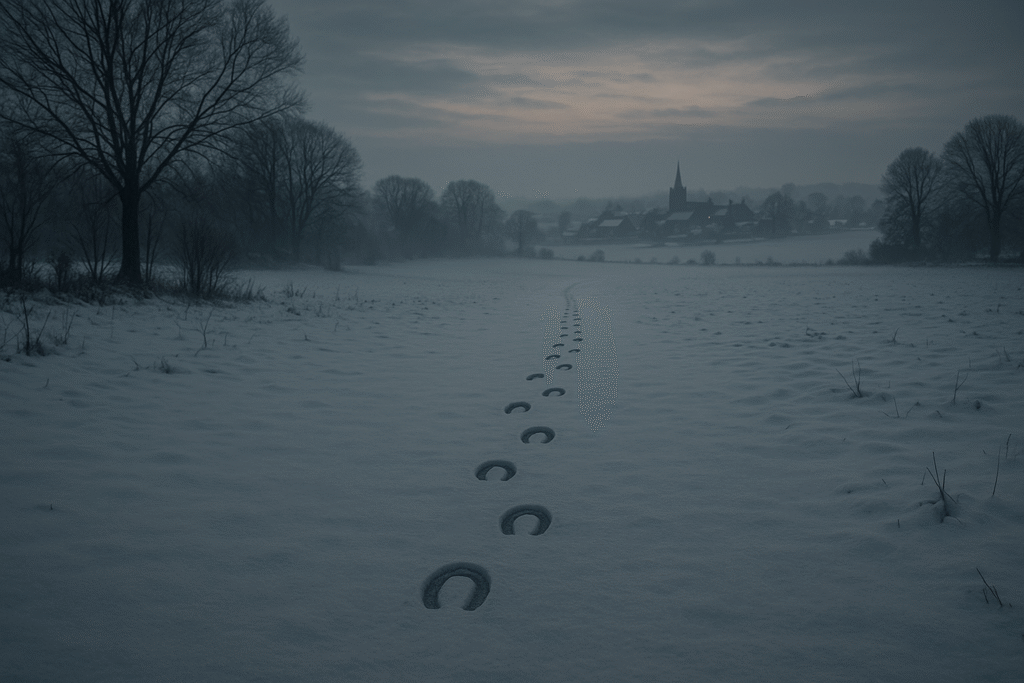
Introduction
In the dead of winter, 1855, the people of Devon awoke to a most unsettling sight: a trail of hoof-like prints seared into the snow, stretching for miles through fields, villages, and even rooftops. No creature had been seen, and no tracks led to or from the prints — only a continuous, single-file path that seemed to defy logic. Over a century and a half later, the mystery of the Devil’s Footprints still echoes through folklore, investigation, and imagination.
A Snowfall and a Shock

On the night of February 8th to 9th, 1855, a heavy snowfall blanketed east and south Devon. But by morning, locals across more than 30 towns and villages had discovered a strange trail of footprints winding through the snow. These prints were roughly 4 inches long, 3 inches wide, and spaced 8 to 16 inches apart. The marks resembled a donkey’s shoe, but in many cases appeared cloven, as if made by something otherworldly.
From Exmouth up through Topsham, and across the Exe Estuary to Dawlish and Teignmouth, the prints spanned up to 100 miles. Some reports even placed them as far afield as Totnes, Torquay, Weymouth, and even Lincolnshire.
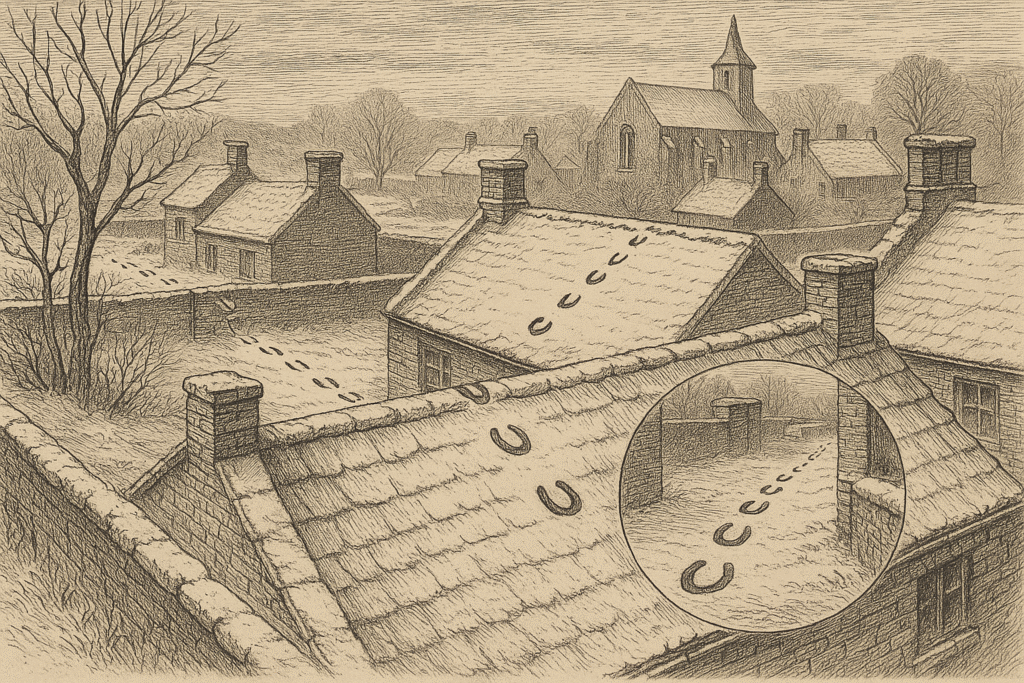
What truly puzzled observers was how the tracks ignored all barriers. They passed over rooftops, scaled high walls, and crossed haystacks, rivers, and even up narrow drainpipes as small as 4 inches wide. It was as if the creature responsible moved through the landscape with supernatural agility — or wasn’t bound by earthly rules at all.
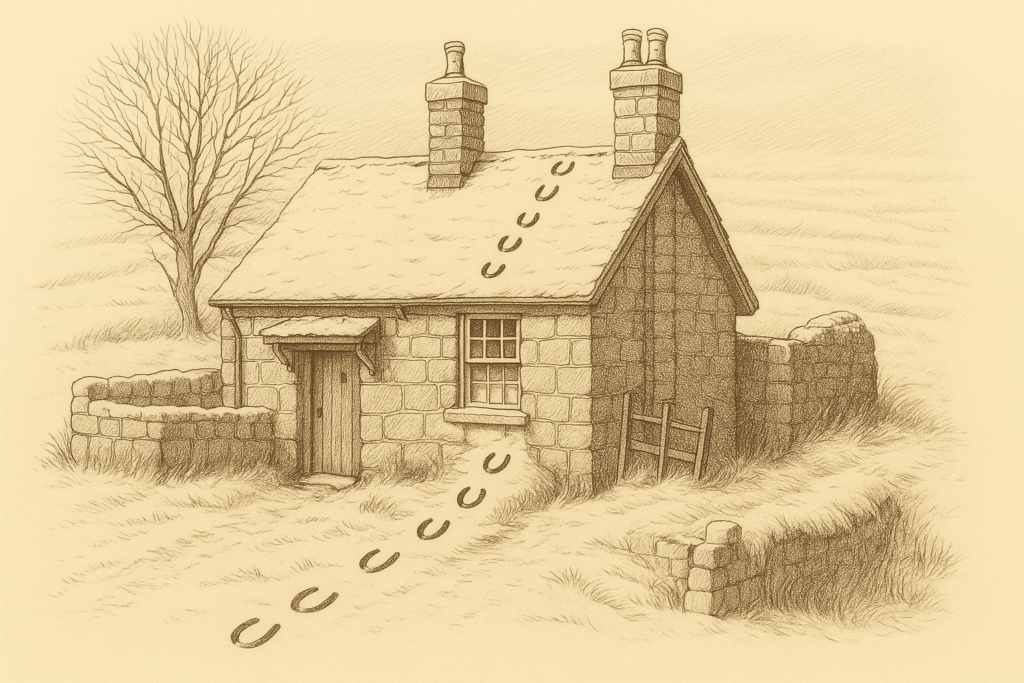
Panic in the Press
Word spread quickly. On February 18th, the Weekly Dispatch reported:
“The inhabitants of the above towns were surprised at discovering the footmarks of some strange and mysterious animal… on the tops of houses and narrow walls, in gardens and court-yards, enclosed by high walls and pailings…”
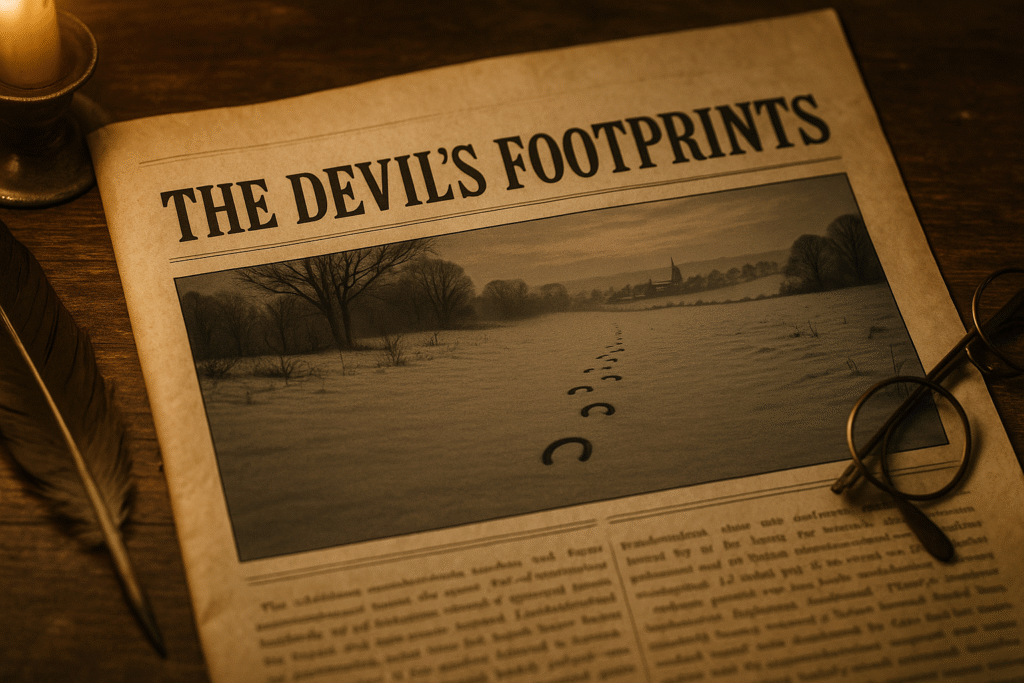
Later that year, in its May 26th, 1855 issue, Bell’s Life in Sydney ran a similar account, noting how even clergy addressed the event from their pulpits, suggesting the prints were the work of Satan himself.
Descriptions varied: some prints were said to be concave, showing only the outer edge, while others showed a more solid, cloven mark. Regardless, they left people unnerved and suspicious, with many refusing to leave their homes after sunset.
Eyewitnesses and Primary Evidence
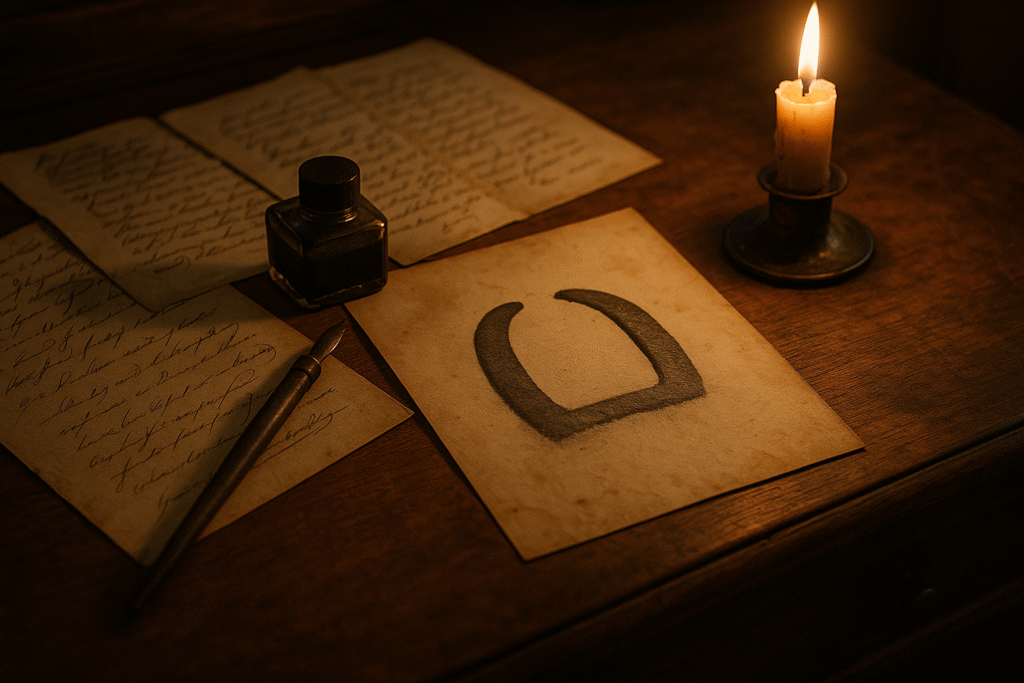
There is little surviving documentation from the time, but in 1950, after a call for more information in the Transactions of the Devonshire Association, a significant discovery was made: a collection of papers belonging to Rev. Henry Thomas Ellacombe, the vicar of Clyst St George during the 1850s.
These papers included:
- Letters from contemporaries such as Rev. G. M. Musgrove, vicar of Withycombe Raleigh
- A draft letter to The Illustrated London News marked “not for publication”
- Tracings of the mysterious footprints
Later, in 1994, researcher Mike Dash compiled these and other sources into a study titled The Devil’s Hoofmarks, published in Fortean Studies.
Additional Accounts and Pursuits
Some locals took it upon themselves to track the footprints. A group from Dawlish reportedly followed them for five miles without finding their source. In another account, Rev. J.J. Rowe and R.H. Busk set out with hounds — only for the dogs to become frightened and refuse to continue.
There were also atmospheric considerations: the sequence of snowfall, thaw, and rapid refreeze that night may have preserved and distorted ordinary tracks into eerie, unrecognizable shapes. The Exe and Teign rivers were reportedly partially frozen, allowing even more unusual patterns to form.
The Theories
The event sparked countless explanations, some plausible — others less so.
Mass Misinterpretation?
Skeptics argue that it’s unlikely anyone could follow the tracks for the full 100 miles in one day. Others note that eyewitness descriptions varied wildly, suggesting multiple unrelated phenomena were lumped into one legend.
The Balloon Theory
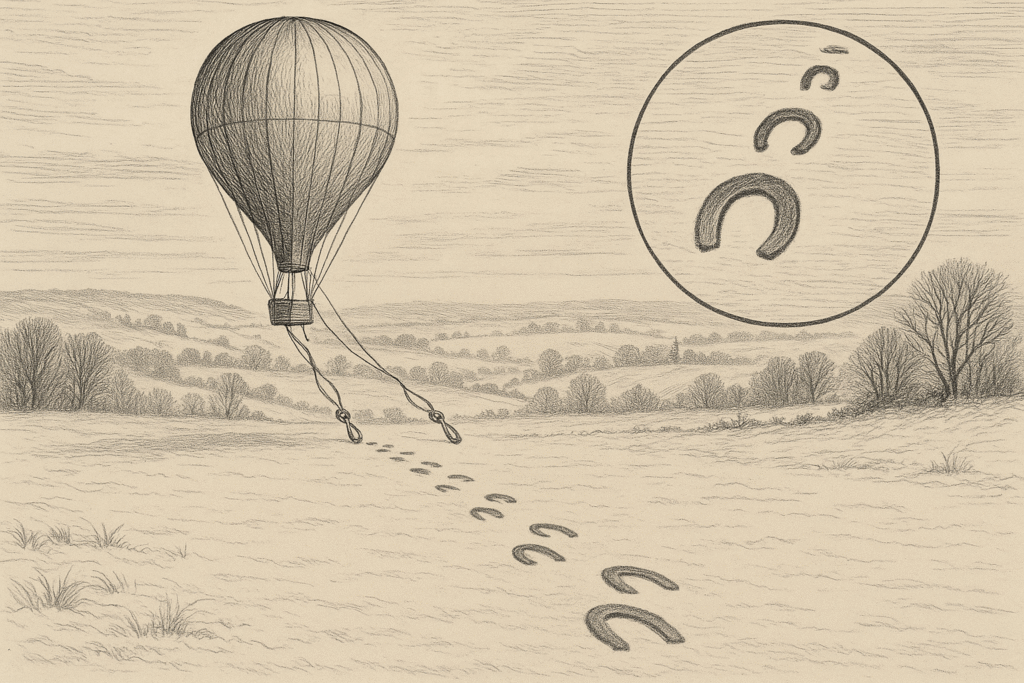
Geoffrey Household, a novelist, proposed that an experimental balloon from Devonport Dockyard had broken free and trailed two shackles through the snow. According to Major Carter, whose grandfather worked at the dockyard, the balloon damaged several greenhouses and windows before descending near Honiton. While it explains the shape, critics question how a balloon could travel such a complex path without snagging on any obstacles.
Mice and Misunderstanding
Mike Dash suggested that wood mice may be partly responsible. When they hop through the snow, their fore- and hind-limb placements can mimic a cloven hoof. This idea was originally proposed in 1855 by Thomas Fox, a brewer and brickmaker, and even published in The Illustrated London News, complete with illustrations.
The Kangaroo Hoax
In a March 1855 letter to The Illustrated London News, Rev. G. M. Musgrove mentioned rumors of escaped kangaroos from Mr. Fische’s private menagerie in Sidmouth. But in a later letter, he admitted to inventing the story to calm his superstitious congregation:
“…the state of the public mind… dreading to go out after sunset… under the conviction that this was the Devil’s work… rendered it very desirable that a turn should be given to such a degraded and vitiated notion.”
The Badger Theory
Richard Owen, writing in The Illustrated London News, suggested the marks were from badgers, the only British plantigrade quadrupeds. Their wide paw prints, especially if multiple animals were active that night, might have caused the confusion.
Otters and Birds
Some later theorists pointed to otters, which can travel long distances and whose webbed feet might appear hoof-like after melting and refreezing. Others suggested large birds like swans or herons might have left distorted tracks — particularly if they were hopping or dragging their wings.
Cultural and Psychological Factors
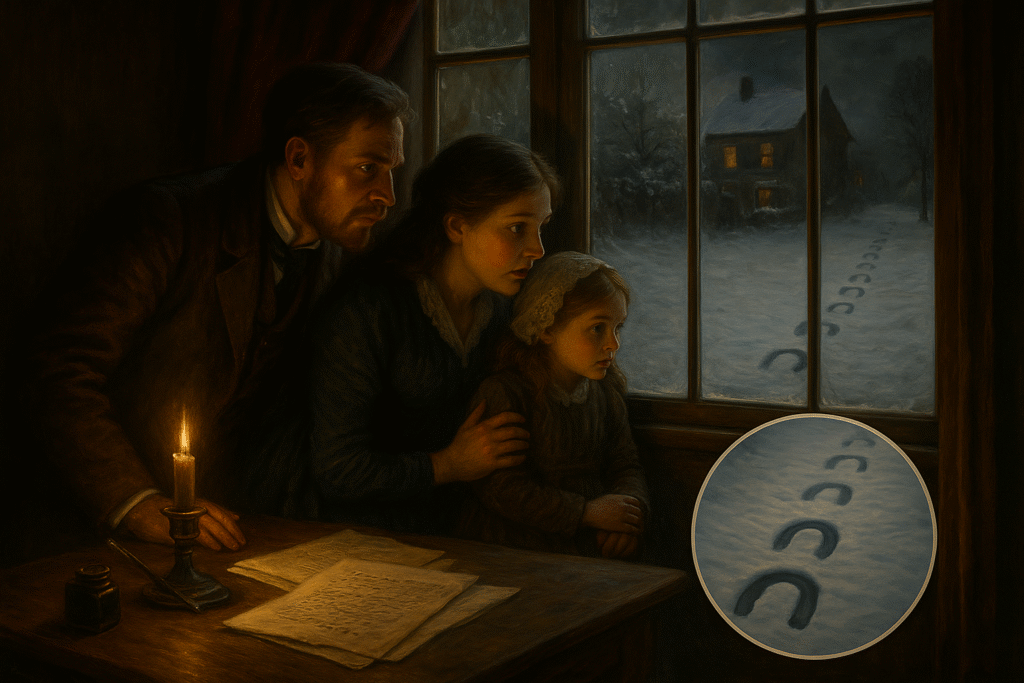
The mid-19th century in rural England was still steeped in religious fear and folklore. An unexplained event like this, appearing overnight in so many places, could have sparked a kind of mass hysteria — especially with the press fueling fears. The label “Devil’s Footprints” likely ensured the phenomenon would be remembered in terrifying terms.
Echoes of the Unexplained
Devon’s chilling event wasn’t the only one of its kind.
- In 1840, The Times reported mysterious hoof-like marks in the Scottish Highlands, stretching across 12 miles of snow.
- In Poland, near Piaskowa-góra, similar markings are said to appear each winter in snow or sand, attributed by locals to supernatural forces.
- In 1909, during the Jersey Devil panic in the United States, numerous hoof-like tracks were reported overnight across New Jersey.
- In 2013, strange tracks were spotted in Girvan, Scotland, though these may have been part of an April Fool’s prank.
Conclusion: A Trail That Never Ends
Whether caused by rodents, weather balloons, or sheer mass hysteria, the mystery of the Devil’s Footprints endures. For some, it was a trick of nature — for others, a sign of something darker wandering the English countryside on a snowy February night.
One thing is certain: these strange impressions left more than tracks in the snow — they left questions that have never been answered.
Have you heard similar strange stories in your part of the world? Leave a comment — and keep your eyes on the snow… just in case.
Sources & Further Reading
This investigation into the Devil’s Footprints was built on a foundation of historical reports, scholarly research, and folkloric analysis. For those curious to explore further, we recommend:
- Wikipedia: Devil’s Footprints
en.wikipedia.org/wiki/Devil%27s_Footprints — A comprehensive overview of the event, including primary theories, historical references, and related cases worldwide. - Mike Dash, “The Devil’s Hoofmarks”, Fortean Studies (1994)
A deep academic dive into surviving evidence, eyewitness letters, and media coverage of the 1855 incident. - Rev. H.T. Ellacombe’s Correspondence
Preserved sketches and letters from eyewitnesses, later uncovered by the Devonshire Association in 1950. - The Illustrated London News Archives (1855)
One of the earliest newspapers to document the mystery, including sketches and local theories. - The Times (March 14, 1840)
A report of similar mysterious prints in the Scottish Highlands 15 years prior to the Devon incident. - German Wiki: Fußspuren des Teufels
The German-language article offers additional international perspectives and rare anecdotal accounts.
